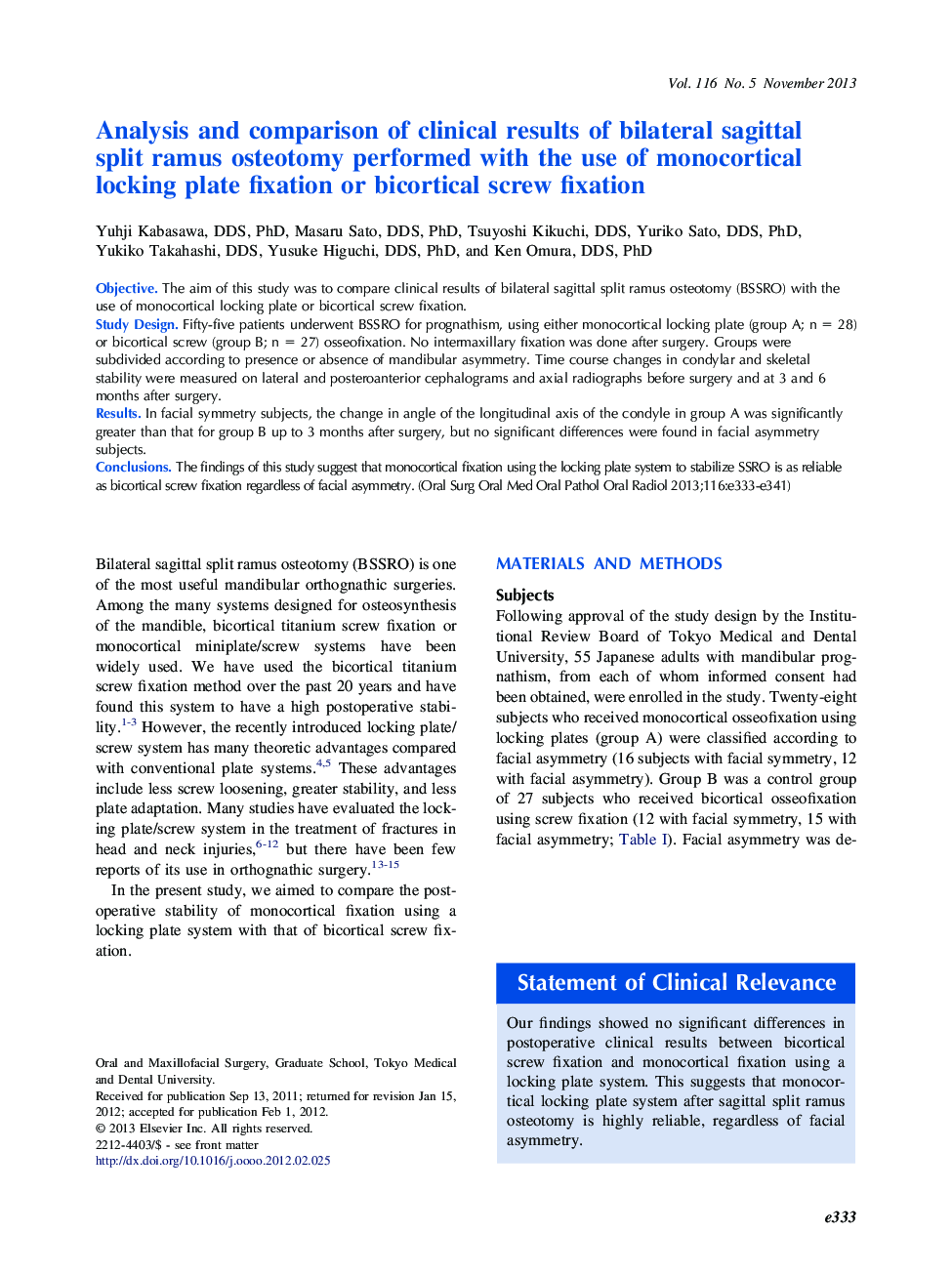| Article ID | Journal | Published Year | Pages | File Type |
|---|---|---|---|---|
| 6056574 | Oral Surgery, Oral Medicine, Oral Pathology and Oral Radiology | 2013 | 9 Pages |
ObjectiveThe aim of this study was to compare clinical results of bilateral sagittal split ramus osteotomy (BSSRO) with the use of monocortical locking plate or bicortical screw fixation.Study DesignFifty-five patients underwent BSSRO for prognathism, using either monocortical locking plate (group A; n = 28) or bicortical screw (group B; n = 27) osseofixation. No intermaxillary fixation was done after surgery. Groups were subdivided according to presence or absence of mandibular asymmetry. Time course changes in condylar and skeletal stability were measured on lateral and posteroanterior cephalograms and axial radiographs before surgery and at 3 and 6 months after surgery.ResultsIn facial symmetry subjects, the change in angle of the longitudinal axis of the condyle in group A was significantly greater than that for group B up to 3 months after surgery, but no significant differences were found in facial asymmetry subjects.ConclusionsThe findings of this study suggest that monocortical fixation using the locking plate system to stabilize SSRO is as reliable as bicortical screw fixation regardless of facial asymmetry.
